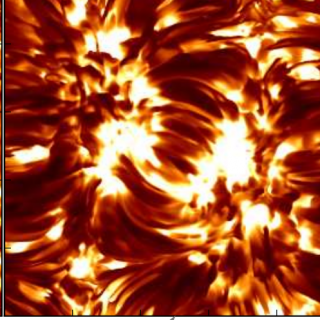Bibcode
Uribe-Patarroyo, N.; Alvarez-Herrero, A.; López Ariste, A.; Asensio-Ramos, A.; Belenguer, T.; Manso-Sainz, R.; Lemen, C.; Gelly, B.
Referencia bibliográfica
Astronomy and Astrophysics, Volume 526, id.A56
Fecha de publicación:
2
2011
Revista
Número de citas
15
Número de citas referidas
14
Descripción
Context. The orbital angular momentum (OAM) of the photon is a property
of light from astronomical objects that has not yet been measured. We
propose a method of measuring the OAM spectrum of light from an extended
natural source, the Sun. Relating the OAM spectrum of different solar
areas to its structures could lead to a novel remote sensing technique.
Aims: We present a method for measuring the OAM spectrum of solar
photons. Methods: The THEMIS (Télescope
Héliographique pour l'Étude du Magnetisme et les
Instabilités Solaires is a 0.9 m solar telescope property of the
French CNRS-INSU at the Spanish Observatorio del Teide.) telescope is
being used with a novel phase-diversity technique. A spatial light
modulator is placed on one pupil image, and an ad-hoc optical setup
allows the measurement of two simultaneous phase-diverse images in the
same CCD, with equal optical paths. Results: Preliminary results
show that very good seeing is mandatory for this kind of observation.
The method works in the laboratory, and good seeing conditions in the
2010 campaign are being awaited.
Proyectos relacionados

Magnetismo, Polarización y Transferencia Radiativa en Astrofísica
Los campos magnéticos están presentes en todos los plasmas astrofísicos y controlan la mayor parte de la variabilidad que se observa en el Universo a escalas temporales intermedias. Se encuentran en estrellas, a lo largo de todo el diagrama de Hertzsprung-Russell, en galaxias, e incluso quizás en el medio intergaláctico. La polarización de la luz
Ernest
Alsina Ballester